GEAR: THE AXIS OF STABILITY OF YOUR FOIL
- News
- Kite foil
- Lowkite
- SUP foil
- Surf foil
- Wing
To ride confidently on a foil, it’s important to familiarize with roll, pitch, and yaw.
No matter your experience, starting out on a foil will be challenging if you don’t grasp a few basic principles. You can’t just apply your reflexes from surfing, kitesurfing, or windsurfing to foil riding. You must understand the stability axes of your foil. As you improve, this will also enable you to fine-tune your foil to your needs, with different settings or a new stabilizer, for example. Let’s take a look at this together!
 Wingfoilers: Pamella and Charlie, GONG team riders, with a Plus, Cruzader Point and Mint FSP 2X.
Wingfoilers: Pamella and Charlie, GONG team riders, with a Plus, Cruzader Point and Mint FSP 2X.Finding balance on a foil board is a different story than staying on your feet on a classic board. Because basically, from your takeoff, you are no longer gliding on a hull but flying on an airplane with the deck of your board as the cockpit. The stability of this airplane is governed by the 3 axes of stability: pitch, roll and yaw.
Depending on the foil set-up you are using, you can change the balance. Beginners will want an ultra stable flight and those with more level, a foil as free as possible. Learning which details influence these aspects will help you to better understand and above all to choose the most suitable foil for your needs.
Pitch
The first axis of stability that you’ll experience at take-off is pitch. That is to say, an alternating movement that makes you dive forwards then backwards. A disturbing feeling for beginners who tend to porpoise, moving up and down above the surface as a dolphin. For beginners, it is generally due to a lack of speed. Your plane takes off because you are pitching up the board but you lack the speed to maintain flight. This is followed by an immediate descent, followed by a rebound on the water and so on. For experienced foilers, note that the pitch which represents the fore-aft stability of your foil is influenced by two aspects:
1. The angle between the front wing and the stabilizer of your foil (called longitudinal V). A significant angle will provide stability on this axis but to the detriment of gliding with a feeling of “pulling” more water. On the contrary, a very neutral angle will give a good top speed but with more complicated control at low speed.
2. The distance between the front wing and the stab. The lower the center distance, the more nervous your foil will be. This is the case for example on a front wing and Ypra Surf-Freestyle stab designed to be as playful as possible. On the other hand, the greater the distance, as on an X-Over model, the more the foil will be soft on takeoff and stable in navigation. On the other hand, it will be less reactive.
This distance on our foils is managed thanks to the length of the interlocking of our stabs. These distances are perfectly studied for each program, from the beginner foil with the X-Over to the most technical foil like the Ypra Race. However, for those who want extra stability in flight and for specific practices, we have added fuselage extensions to our V2 accessories. These extensions are mainly intended for beginner riders or in the case of windfoil use.
 Wingfoilers: Francesco and Charlie, GONG team riders, with X-Over foils.
Wingfoilers: Francesco and Charlie, GONG team riders, with X-Over foils.
Roll or side-to-side stability
Then, another important axis: roll or more simply side-to-side stability. Unlike pitch, which is a back-to-front rocking motion, roll is a motion that rolls you from left to right. The more stable your foil is in roll, the less you will have this feeling of pendulum once in the air. Three things can affect this balance:
- The size of your mast. You just have to navigate low to realize it. You’ll be much more stable. The sensation of pendulum will be less important with a 70 cm mast than from the top of a 100 cm mast. The height gives more amplitude to the lateral movements, which can be technical for a beginner.
- The wingspan of your wings. Large wingspans give stability to your foil, it’s like putting side-wheels on your bike. This type of wing makes it easier, for example, to learn how to switch your stance while flying. On the other hand, entering curves will be more complicated and the radius for turning greater.If, on the contrary, the wingspan is small, you will lose this stability. You will have to be more careful where you place your feet on the board, on the other hand you will gain enormously in maneuverability with an increased “rail to rail” carving sensation!
- The shape of the tips. If the tips of the ears are relatively wide with surface as with the Ascent, your foil will be wedged. If, on the contrary, the tips are more “pinched” like on the Fluid, you will have more freedom in rail to rail.
 Kitefoiler: Thomas, GONG staff, with a Fronteira HDCC, Ayto Aramid DP and Fluid setup.
Kitefoiler: Thomas, GONG staff, with a Fronteira HDCC, Ayto Aramid DP and Fluid setup.
Yaw
The latter represents the possibility of rotation or skidding of the foil in relation to the axis of the mast. For example, if your foil is very stable in yaw it will go straight, like on rails! If, on the contrary, it is very free on this axis, it will give a sensation of slipping or of moving sideways like a crab. This glide sought after by carving fans can be (very) complicated to manage for a beginner!
2 main elements will modify the importance of yaw:
- The chord of the mast. The larger the chord of the mast, the better it will keep the foil in a straight line. It will play its role of anti-drift and guide the foil in a straight line.
- Next you have the curvature or dihedral of the wings. If the wings are very flat like a Fluid, they will skid easily. With this type of shape, you will have a very playful foil but it can be a little too sporty for a beginner. On the other hand, if the wings are curved, like with an Ascent for example, the feeling of stability will be more important.
 Prone foiler : Mathieu, team rider GONG, avec un setup Veloce H et une Scura EPS Pro.
Prone foiler : Mathieu, team rider GONG, avec un setup Veloce H et une Scura EPS Pro.
The shapes and sizes of your foils greatly influence the overall balance of your foil. Once all these elements are understood, you will be able to choose more easily which foil is made for you or simply which elements to modify to find the perfect set-up to meet your needs on the water.








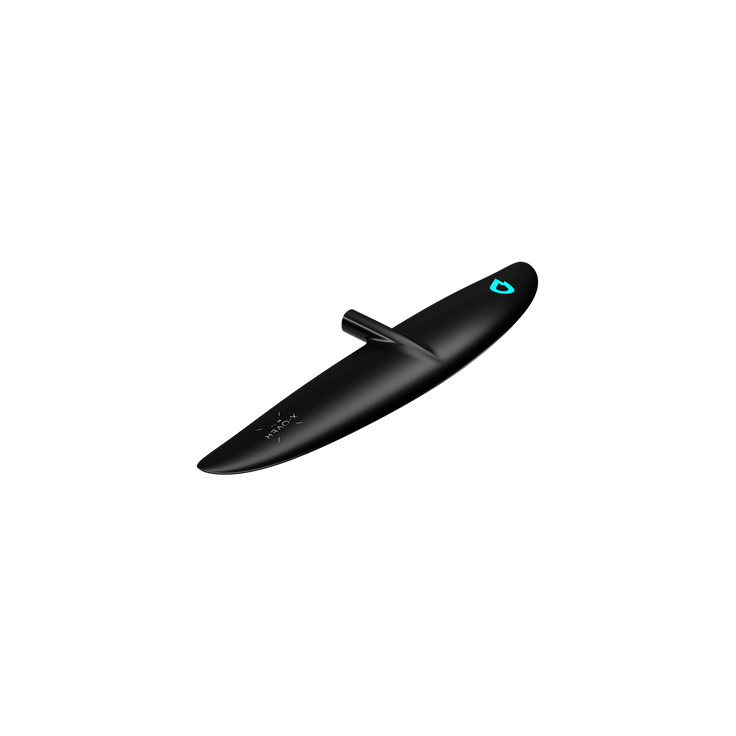

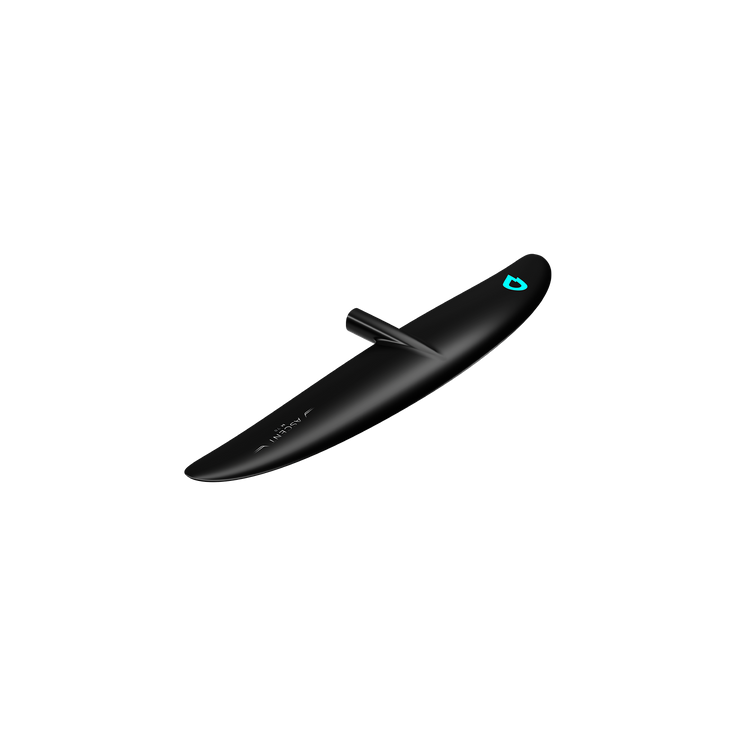

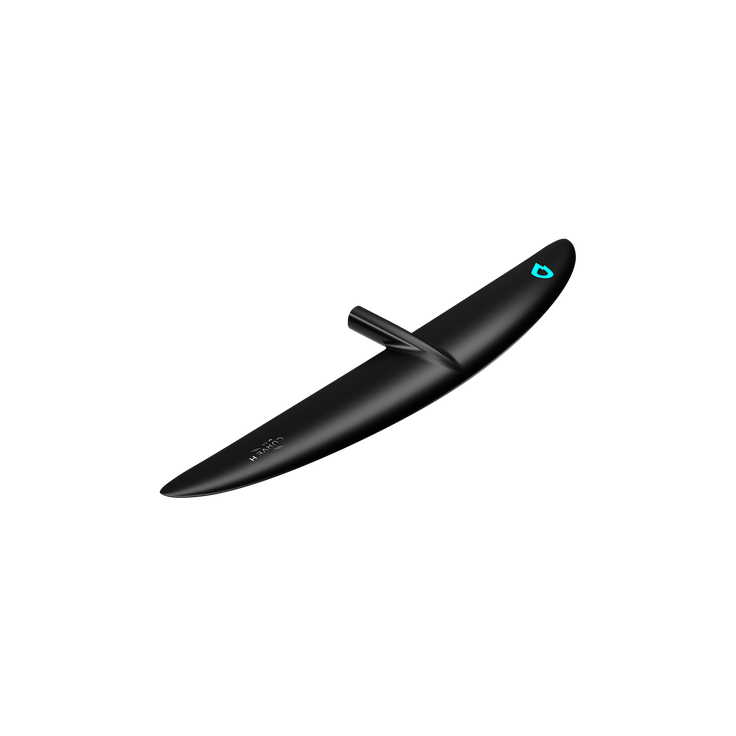
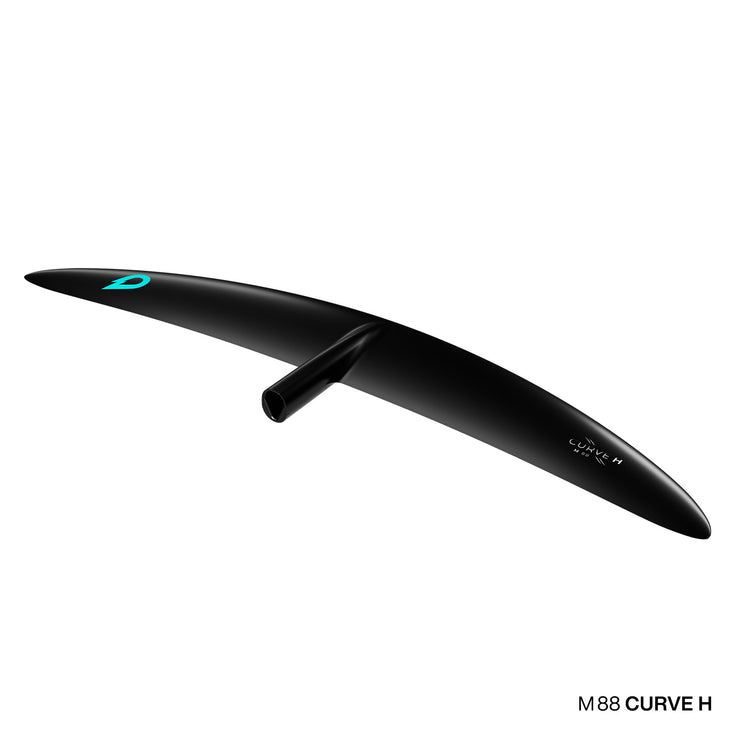
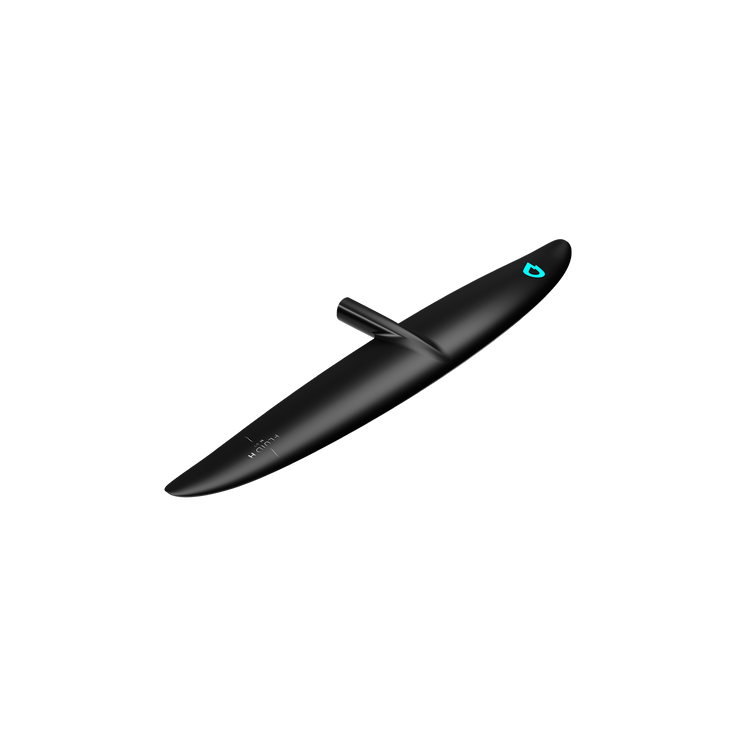
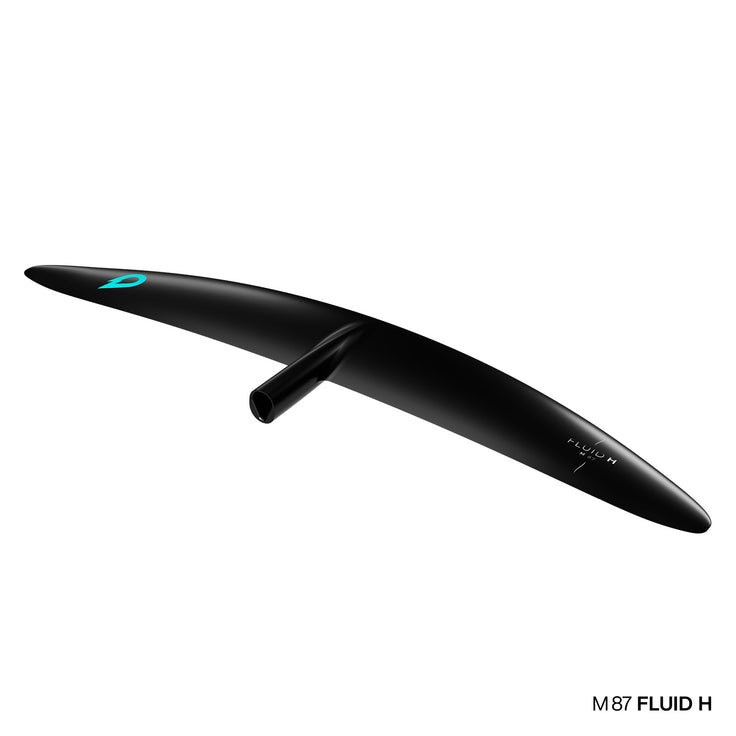
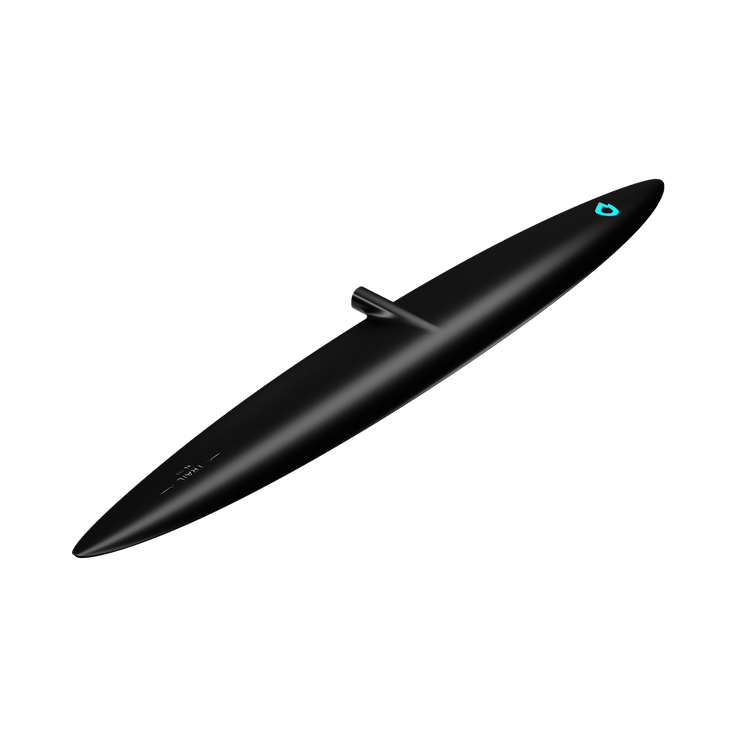

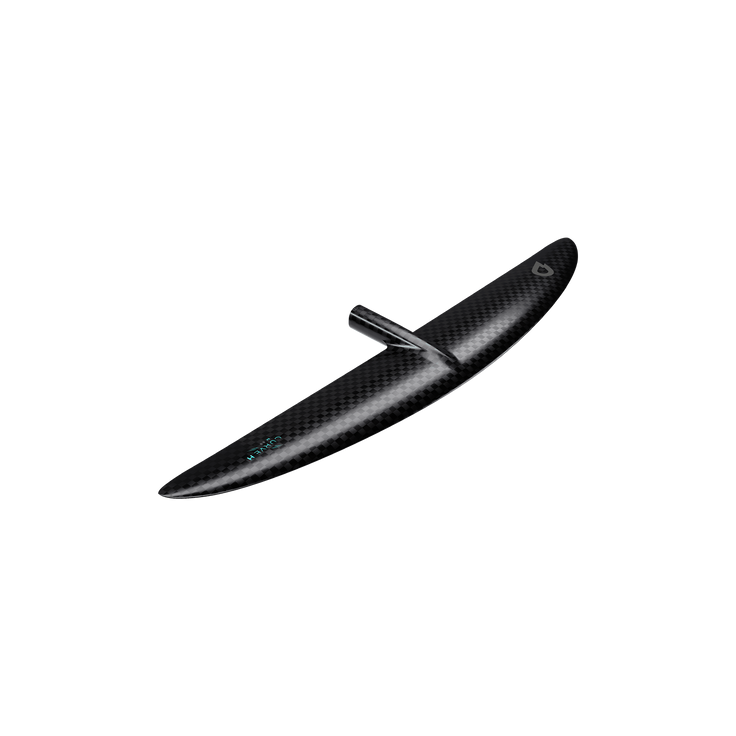
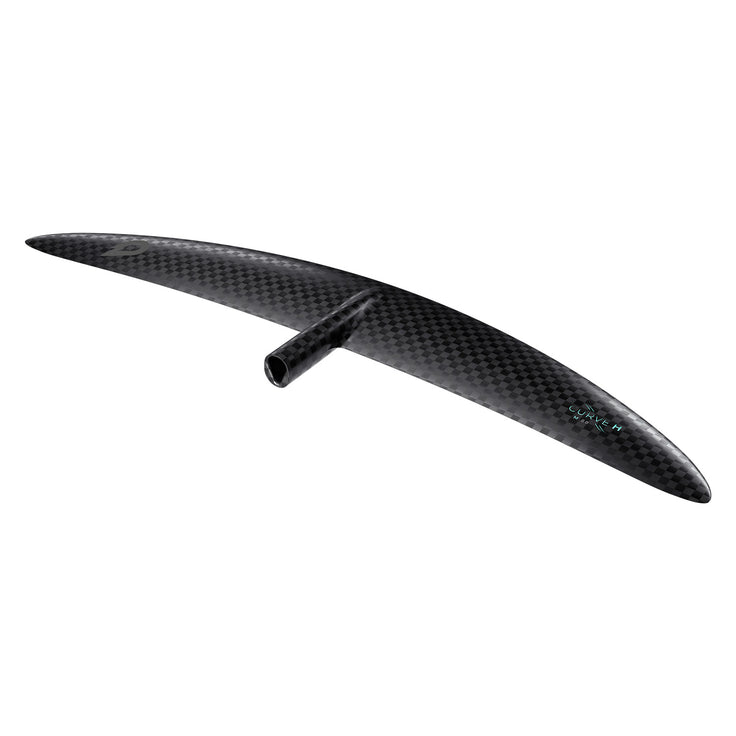
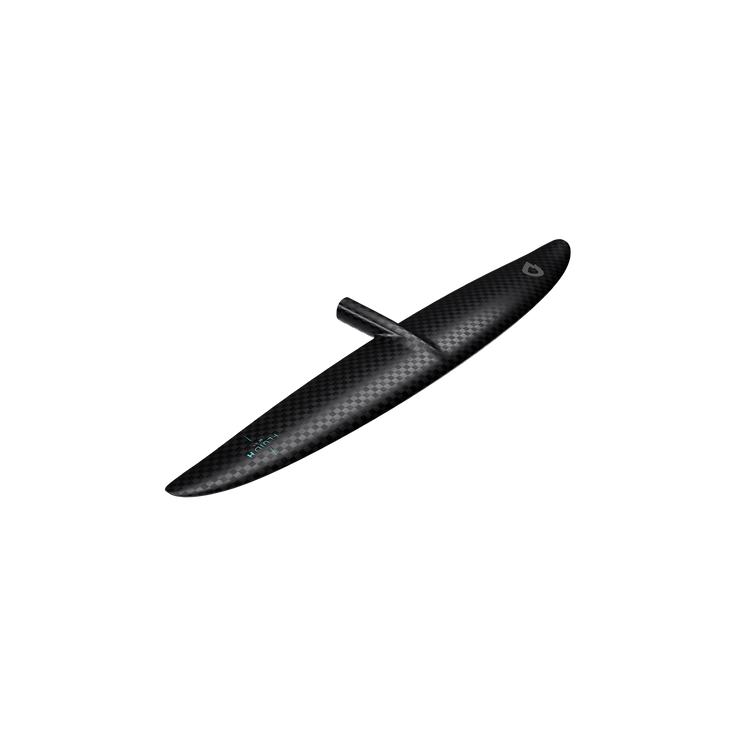
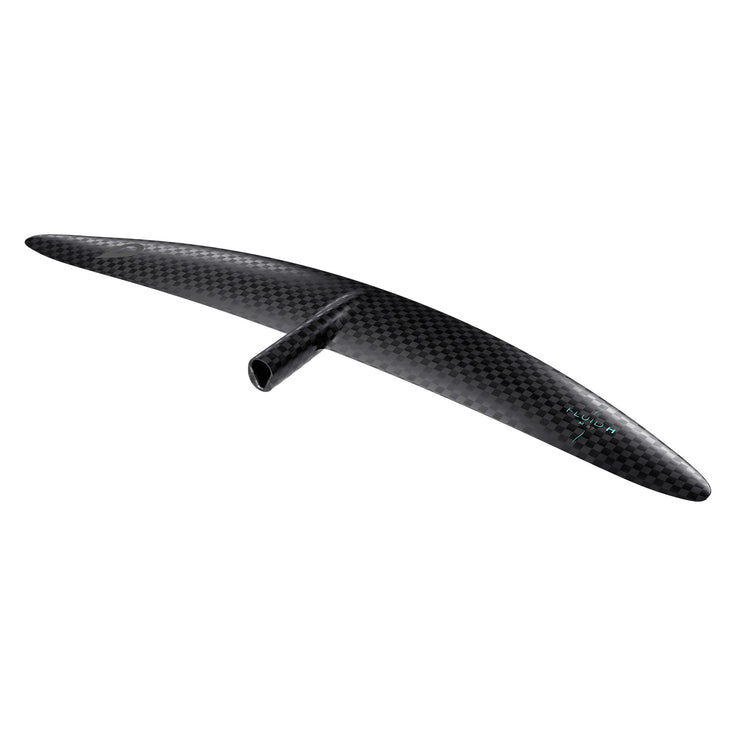
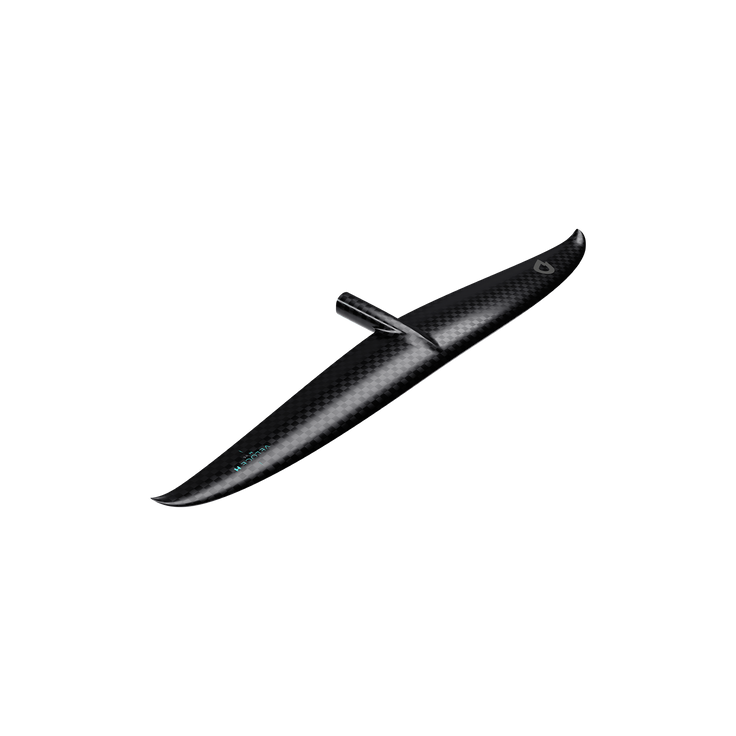
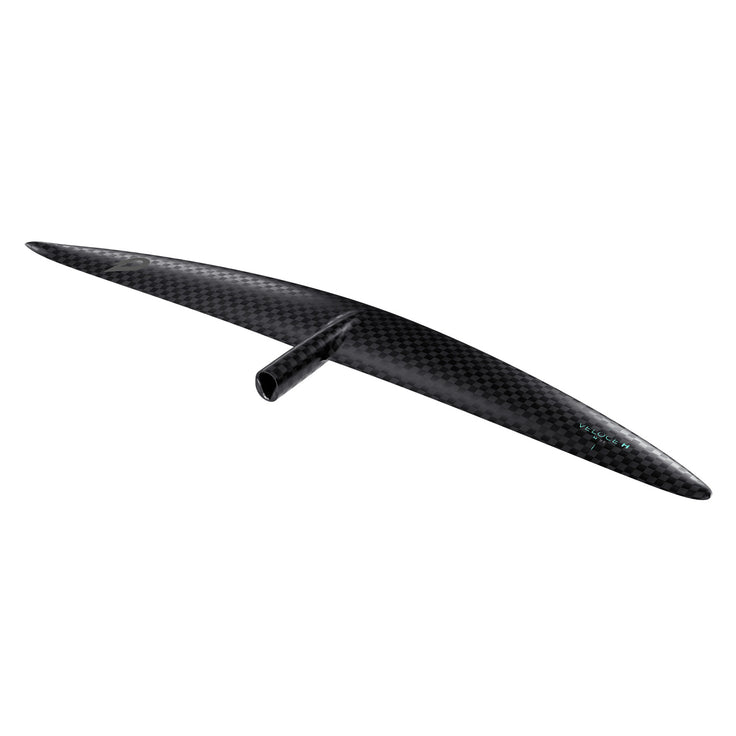
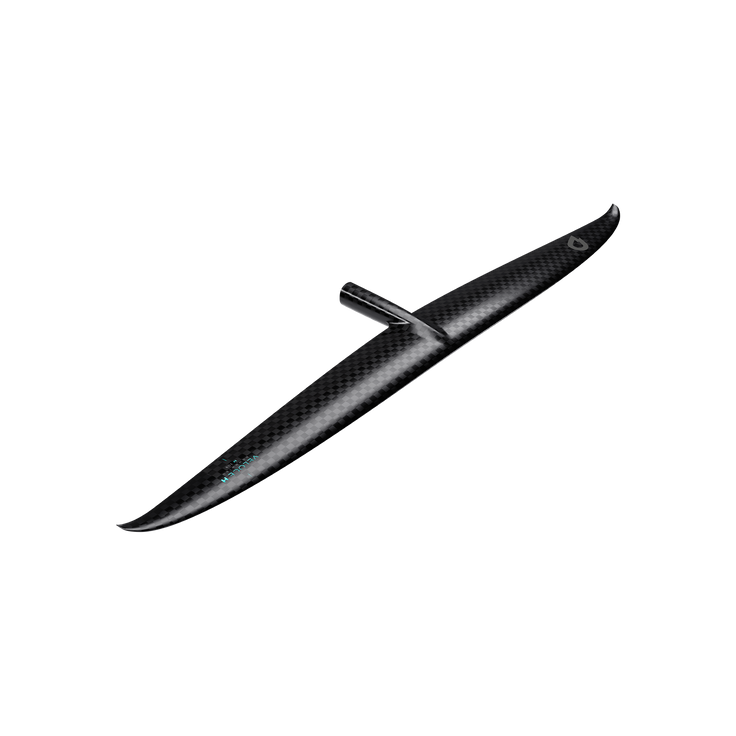
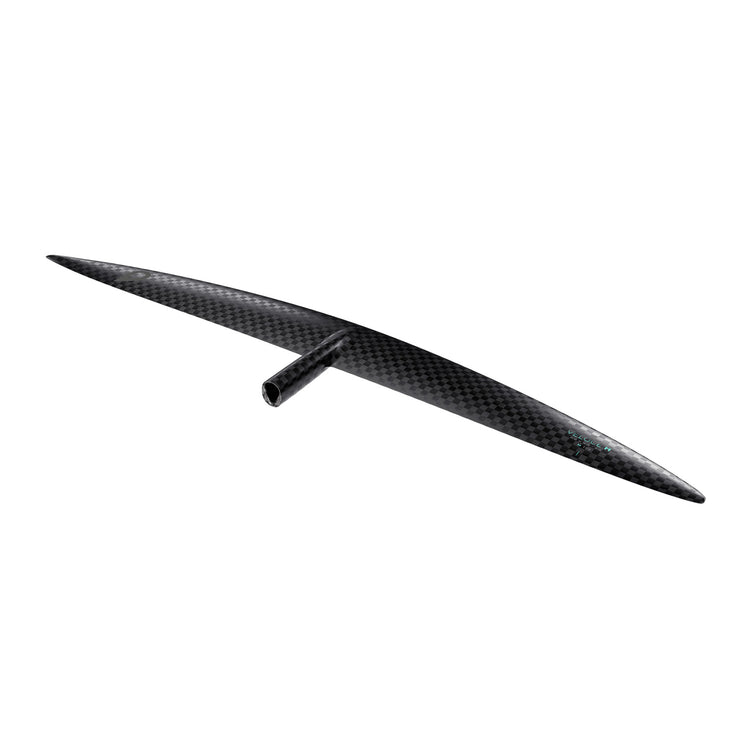
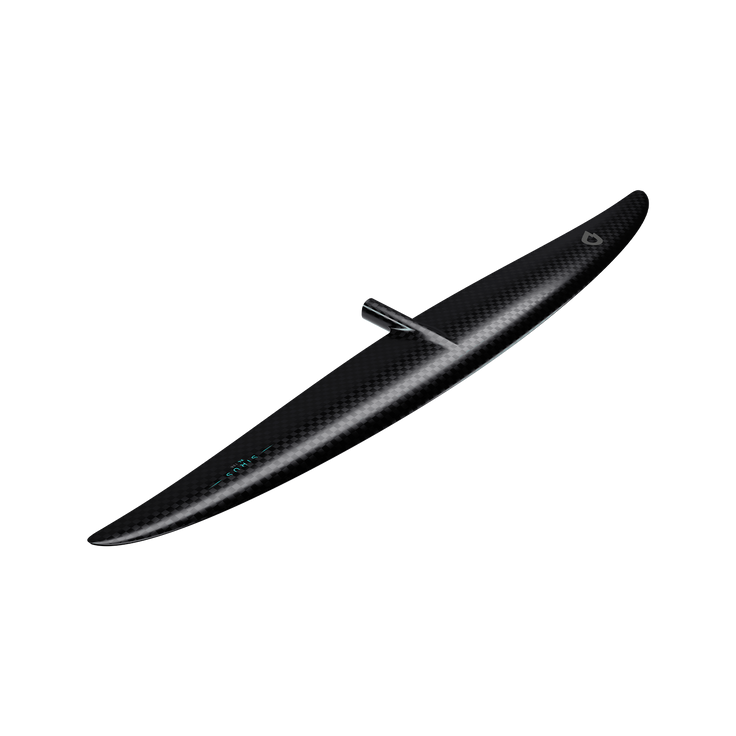
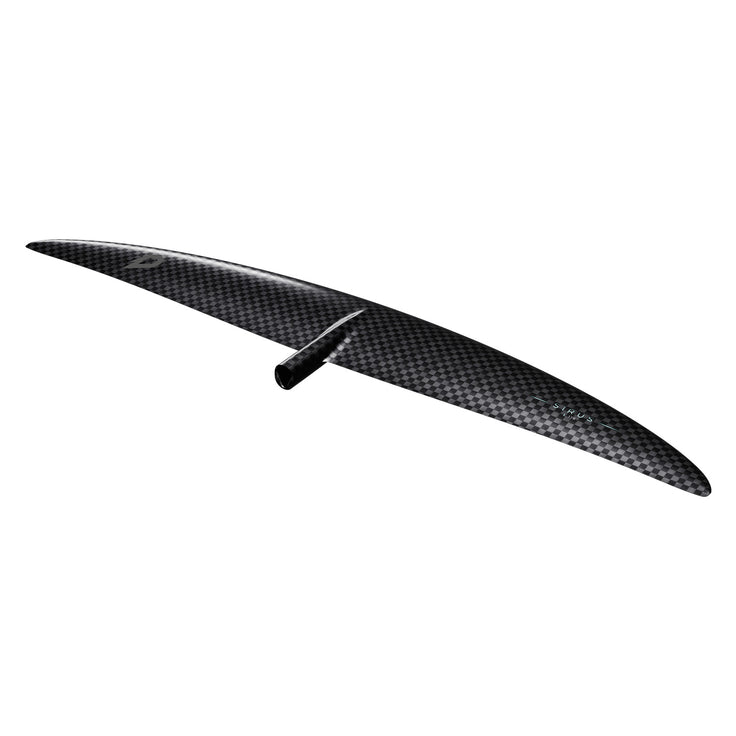
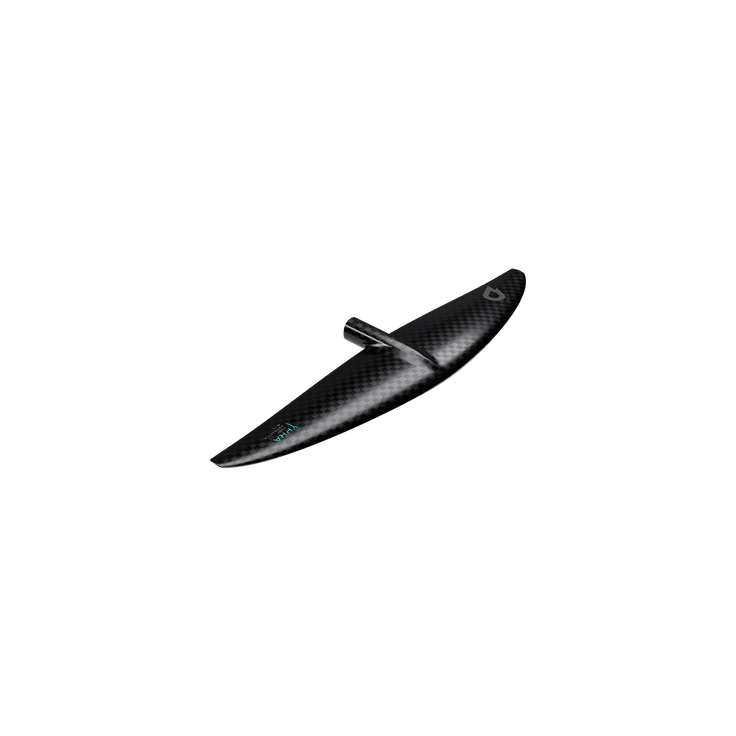
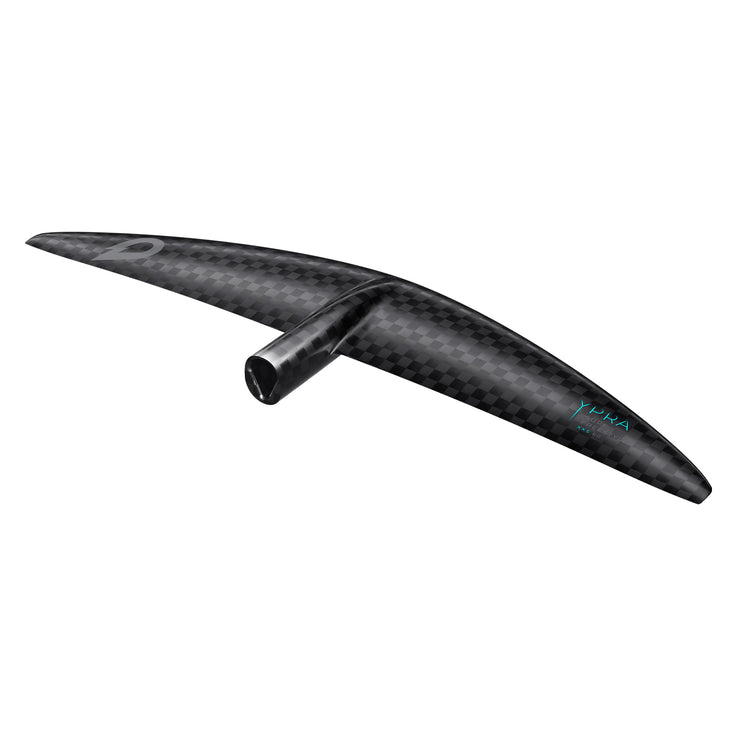


3 comments
Do you know if new stabs will be produced for the new fluid and veloce front wings? I see there are new stabs for the x-over and curve but not for the fluid and Veloce. I’m not talking about the high aspect “H” wings, just the new medium aspect wings.
Also will you offer any sizes on the new x-over, curve, fluid, and veloce that are larger than XXL?
Thanks – Harry
Hello Harry,
Actually, the Pro stabs are also compatible with the regular front wings and you can mix different models.
So you can use a Pro stab with a regular front wing, you will improve the glide and top speed.
If you want to go on giant front wings, you will need to on the H line indeed.
We wish you all the best !
Thanks !
Merci pour les infos